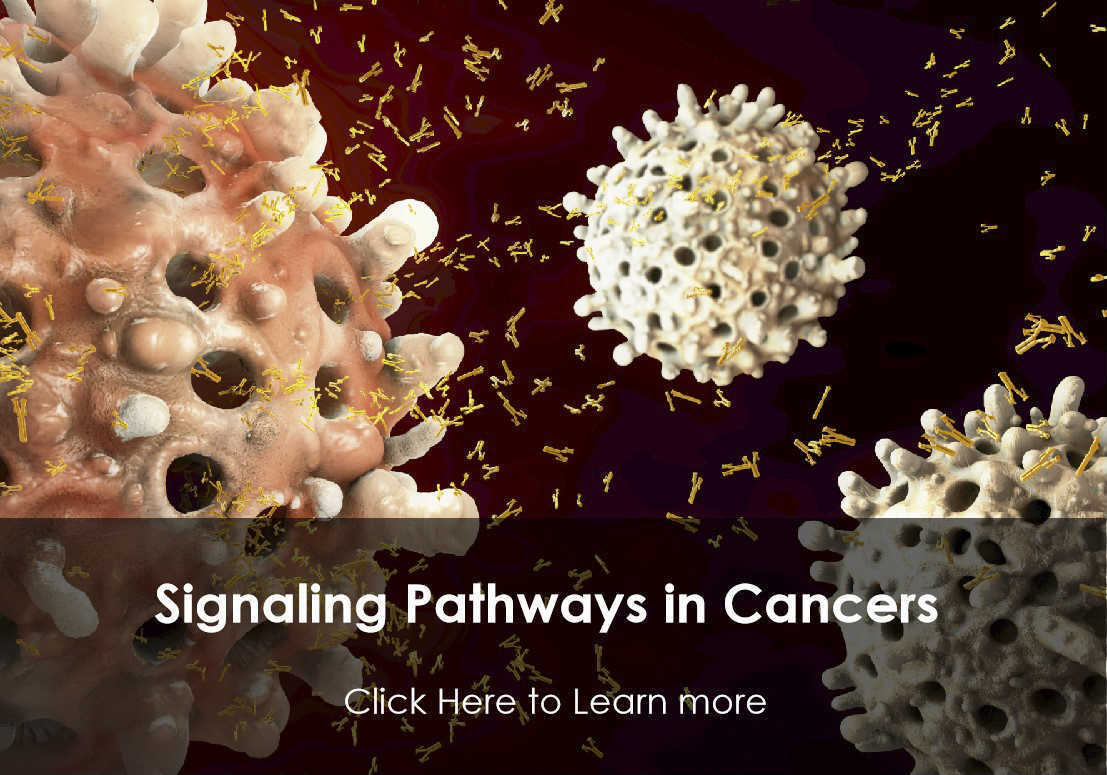NF2
This gene encodes a protein that is similar to some members of the ERM (ezrin, radixin, moesin) family of proteins that are thought to link cytoskeletal components with proteins in the cell membrane. This gene product has been shown to interact with cell-surface proteins, proteins involved in cytoskeletal dynamics and proteins involved in regulating ion transport. This gene is expressed at high levels during embryonic development; in adults, significant expression is found in Schwann cells, meningeal cells, lens and nerve. Mutations in this gene are associated with neurofibromatosis type II which is characterized by nervous system and skin tumors and ocular abnormalities. Two predominant isoforms and a number of minor isoforms are produced by alternatively spliced transcripts. [provided by RefSeq, Jul 2008]
Full Name
Neurofibromin 2
Function
Probable regulator of the Hippo/SWH (Sav/Wts/Hpo) signaling pathway, a signaling pathway that plays a pivotal role in tumor suppression by restricting proliferation and promoting apoptosis. Along with WWC1 can synergistically induce the phosphorylation of LATS1 and LATS2 and can probably function in the regulation of the Hippo/SWH (Sav/Wts/Hpo) signaling pathway. May act as a membrane stabilizing protein. May inhibit PI3 kinase by binding to AGAP2 and impairing its stimulating activity. Suppresses cell proliferation and tumorigenesis by inhibiting the CUL4A-RBX1-DDB1-VprBP/DCAF1 E3 ubiquitin-protein ligase complex.
Biological Process
Actin cytoskeleton organization Source: HGNC-UCL
Cell-cell junction organization Source: Ensembl
Ectoderm development Source: Ensembl
Hippocampus development Source: Ensembl
Lens fiber cell differentiation Source: Ensembl
Mesoderm formation Source: Ensembl
Negative regulation of cell-cell adhesion Source: HGNC-UCL
Negative regulation of cell-matrix adhesion Source: HGNC-UCL
Negative regulation of cell migration Source: HGNC-UCL
Negative regulation of cell population proliferation Source: UniProtKB
Negative regulation of MAPK cascade Source: Ensembl
Negative regulation of protein kinase activity Source: Ensembl
Negative regulation of receptor signaling pathway via JAK-STAT Source: HGNC-UCL
Negative regulation of tyrosine phosphorylation of STAT protein Source: HGNC-UCL
Odontogenesis of dentin-containing tooth Source: Ensembl
Positive regulation of cell differentiation Source: Ensembl
Positive regulation of stress fiber assembly Source: HGNC-UCL
Regulation of apoptotic process Source: UniProtKB
Regulation of cell cycle Source: UniProtKB
Regulation of gliogenesis Source: GO_Central
Regulation of hippo signaling Source: UniProtKB
Regulation of neural precursor cell proliferation Source: Ensembl
Regulation of protein localization to nucleus Source: Ensembl
Regulation of protein stability Source: Ensembl
Regulation of stem cell proliferation Source: Ensembl
Schwann cell proliferation Source: HGNC-UCL
Cell-cell junction organization Source: Ensembl
Ectoderm development Source: Ensembl
Hippocampus development Source: Ensembl
Lens fiber cell differentiation Source: Ensembl
Mesoderm formation Source: Ensembl
Negative regulation of cell-cell adhesion Source: HGNC-UCL
Negative regulation of cell-matrix adhesion Source: HGNC-UCL
Negative regulation of cell migration Source: HGNC-UCL
Negative regulation of cell population proliferation Source: UniProtKB
Negative regulation of MAPK cascade Source: Ensembl
Negative regulation of protein kinase activity Source: Ensembl
Negative regulation of receptor signaling pathway via JAK-STAT Source: HGNC-UCL
Negative regulation of tyrosine phosphorylation of STAT protein Source: HGNC-UCL
Odontogenesis of dentin-containing tooth Source: Ensembl
Positive regulation of cell differentiation Source: Ensembl
Positive regulation of stress fiber assembly Source: HGNC-UCL
Regulation of apoptotic process Source: UniProtKB
Regulation of cell cycle Source: UniProtKB
Regulation of gliogenesis Source: GO_Central
Regulation of hippo signaling Source: UniProtKB
Regulation of neural precursor cell proliferation Source: Ensembl
Regulation of protein localization to nucleus Source: Ensembl
Regulation of protein stability Source: Ensembl
Regulation of stem cell proliferation Source: Ensembl
Schwann cell proliferation Source: HGNC-UCL
Cellular Location
Isoform 1:
Nucleus
Plasma membrane
filopodium membrane
ruffle membrane
Note: In a fibroblastic cell line, isoform 1 is found homogeneously distributed over the entire cell, with a particularly strong staining in ruffling membranes and filopodia. Colocalizes with MPP1 in non-myelin-forming Schwann cells. Binds with DCAF1 in the nucleus. The intramolecular association of the FERM domain with the C-terminal tail promotes nuclear accumulation. The unphosphorylated form accumulates predominantly in the nucleus while the phosphorylated form is largely confined to the non-nuclear fractions.
Isoform 7:
Other locations
perinuclear region
Cytoplasmic granule
Note: Observed in cytoplasmic granules concentrated in a perinuclear location. Isoform 7 is absent from ruffling membranes and filopodia.
Isoform 9:
Other locations
perinuclear region
Cytoplasmic granule
Note: Observed in cytoplasmic granules concentrated in a perinuclear location. Isoform 9 is absent from ruffling membranes and filopodia.
Isoform 10:
Nucleus
Plasma membrane
filopodium membrane
ruffle membrane
Cytoskeleton
Other locations
perinuclear region
Cytoplasmic granule
Note: In a fibroblastic cell line, isoform 10 is found homogeneously distributed over the entire cell, with a particularly strong staining in ruffling membranes and filopodia.
Nucleus
Plasma membrane
filopodium membrane
ruffle membrane
Note: In a fibroblastic cell line, isoform 1 is found homogeneously distributed over the entire cell, with a particularly strong staining in ruffling membranes and filopodia. Colocalizes with MPP1 in non-myelin-forming Schwann cells. Binds with DCAF1 in the nucleus. The intramolecular association of the FERM domain with the C-terminal tail promotes nuclear accumulation. The unphosphorylated form accumulates predominantly in the nucleus while the phosphorylated form is largely confined to the non-nuclear fractions.
Isoform 7:
Other locations
perinuclear region
Cytoplasmic granule
Note: Observed in cytoplasmic granules concentrated in a perinuclear location. Isoform 7 is absent from ruffling membranes and filopodia.
Isoform 9:
Other locations
perinuclear region
Cytoplasmic granule
Note: Observed in cytoplasmic granules concentrated in a perinuclear location. Isoform 9 is absent from ruffling membranes and filopodia.
Isoform 10:
Nucleus
Plasma membrane
filopodium membrane
ruffle membrane
Cytoskeleton
Other locations
perinuclear region
Cytoplasmic granule
Note: In a fibroblastic cell line, isoform 10 is found homogeneously distributed over the entire cell, with a particularly strong staining in ruffling membranes and filopodia.
Involvement in disease
Neurofibromatosis 2 (NF2):
Genetic disorder characterized by bilateral vestibular schwannomas (formerly called acoustic neuromas), schwannomas of other cranial and peripheral nerves, meningiomas, and ependymomas. It is inherited in an autosomal dominant fashion with full penetrance. Affected individuals generally develop symptoms of eighth-nerve dysfunction in early adulthood, including deafness and balance disorder. Although the tumors of NF2 are histologically benign, their anatomic location makes management difficult, and patients suffer great morbidity and mortality.
Schwannomatosis 1 (SWNTS1):
A cancer syndrome in which patients develop multiple non-vestibular schwannomas, benign neoplasms that arise from Schwann cells of the cranial, peripheral, and autonomic nerves.
Mesothelioma, malignant (MESOM):
An aggressive neoplasm of the serosal lining of the chest. It appears as broad sheets of cells, with some regions containing spindle-shaped, sarcoma-like cells and other regions showing adenomatous patterns. Pleural mesotheliomas have been linked to exposure to asbestos.
Genetic disorder characterized by bilateral vestibular schwannomas (formerly called acoustic neuromas), schwannomas of other cranial and peripheral nerves, meningiomas, and ependymomas. It is inherited in an autosomal dominant fashion with full penetrance. Affected individuals generally develop symptoms of eighth-nerve dysfunction in early adulthood, including deafness and balance disorder. Although the tumors of NF2 are histologically benign, their anatomic location makes management difficult, and patients suffer great morbidity and mortality.
Schwannomatosis 1 (SWNTS1):
A cancer syndrome in which patients develop multiple non-vestibular schwannomas, benign neoplasms that arise from Schwann cells of the cranial, peripheral, and autonomic nerves.
Mesothelioma, malignant (MESOM):
An aggressive neoplasm of the serosal lining of the chest. It appears as broad sheets of cells, with some regions containing spindle-shaped, sarcoma-like cells and other regions showing adenomatous patterns. Pleural mesotheliomas have been linked to exposure to asbestos.
PTM
Phosphorylation of Ser-518 inhibits nuclear localization by disrupting the intramolecular association of the FERM domain with the C-terminal tail (PubMed:20178741). The dephosphorylation of Ser-518 favors the interaction with NOP53 (PubMed:21167305).
Ubiquitinated by the CUL4A-RBX1-DDB1-DCAF1/VprBP E3 ubiquitin-protein ligase complex for ubiquitination and subsequent proteasome-dependent degradation.
Ubiquitinated by the CUL4A-RBX1-DDB1-DCAF1/VprBP E3 ubiquitin-protein ligase complex for ubiquitination and subsequent proteasome-dependent degradation.
View more
Anti-NF2 antibodies
+ Filters
 Loading...
Loading...
Target: NF2
Host: Rabbit
Antibody Isotype: IgG
Specificity: Human, Mouse, Rat
Clone: D1D8
Application*: WB, IP
Target: NF2
Host: Rabbit
Antibody Isotype: IgG
Specificity: Human, Mouse, Rat, Hamster, Monkey
Clone: D3S3W
Application*: WB, IP, IF (IC)
Target: NF2
Host: Rabbit
Antibody Isotype: IgG
Specificity: Monkey, Human, Mouse, Rat
Clone: D5A4I
Application*: WB, IP
Target: NF2
Host: Rabbit
Antibody Isotype: IgG
Specificity: Human, Mouse, Rat, Monkey
Clone: D1P8I
Application*: WB, IF (IC)
Target: NF2
Host: Mouse
Antibody Isotype: IgG1
Specificity: Mouse, Rat, Human
Clone: NFn27b
Application*: WB
Target: NF2
Host: Mouse
Specificity: Human
Clone: CBWJN-0649
Application*: WB, F, IC
Target: NF2
Host: Rabbit
Antibody Isotype: IgG
Specificity: Mouse, Rat, Human
Clone: CBWJN-1351
Application*: WB, IP
Target: NF2
Host: Mouse
Antibody Isotype: IgG2a, κ
Specificity: Human
Clone: AF1G4
Application*: E, WB
Target: NF2
Host: Mouse
Antibody Isotype: IgG2b
Specificity: Human
Clone: CBWJN-0053
Application*: E, WB
Target: NF2
Host: Mouse
Antibody Isotype: IgG2b
Specificity: Human
Clone: CBWJN-1350
Application*: WB
More Infomation
Hot products 
-
Mouse Anti-BSN Recombinant Antibody (219E1) (CBMAB-1228-CN)

-
Mouse Anti-CGAS Recombinant Antibody (CBFYM-0995) (CBMAB-M1146-FY)

-
Mouse Anti-ACO2 Recombinant Antibody (V2-179329) (CBMAB-A0627-YC)

-
Mouse Anti-14-3-3 Pan Recombinant Antibody (V2-9272) (CBMAB-1181-LY)

-
Mouse Anti-CD1C Recombinant Antibody (L161) (CBMAB-C2173-CQ)

-
Mouse Anti-CD8 Recombinant Antibody (C1083) (CBMAB-C1083-LY)

-
Mouse Anti-CCL18 Recombinant Antibody (64507) (CBMAB-C7910-LY)

-
Mouse Anti-ASB9 Recombinant Antibody (1D8) (CBMAB-A0529-LY)

-
Rat Anti-FABP3 Recombinant Antibody (CBXF-2299) (CBMAB-F1612-CQ)

-
Mouse Anti-BACE1 Recombinant Antibody (CBLNB-121) (CBMAB-1180-CN)

-
Rabbit Anti-CCN1 Recombinant Antibody (CBWJC-3580) (CBMAB-C4816WJ)

-
Mouse Anti-ABCA3 Recombinant Antibody (V2-178911) (CBMAB-A0145-YC)

-
Mouse Anti-CARD11 Recombinant Antibody (CBFYC-0811) (CBMAB-C0866-FY)

-
Rat Anti-CD300A Recombinant Antibody (172224) (CBMAB-C0423-LY)

-
Mouse Anti-ENO2 Recombinant Antibody (H14) (CBMAB-E1341-FY)

-
Mouse Anti-CIITA Recombinant Antibody (CBLC160-LY) (CBMAB-C10987-LY)

-
Mouse Anti-AMH Recombinant Antibody (5/6) (CBMAB-A2527-YC)

-
Mouse Anti-ENO1 Recombinant Antibody (CBYC-A950) (CBMAB-A4388-YC)

-
Mouse Anti-ACKR3 Recombinant Antibody (V2-261265) (CBMAB-C1023-LY)

-
Mouse Anti-CORO1A Recombinant Antibody (4G10) (V2LY-1206-LY806)

For Research Use Only. Not For Clinical Use.
(P): Predicted
* Abbreviations
- AActivation
- AGAgonist
- APApoptosis
- BBlocking
- BABioassay
- BIBioimaging
- CImmunohistochemistry-Frozen Sections
- CIChromatin Immunoprecipitation
- CTCytotoxicity
- CSCostimulation
- DDepletion
- DBDot Blot
- EELISA
- ECELISA(Cap)
- EDELISA(Det)
- ESELISpot
- EMElectron Microscopy
- FFlow Cytometry
- FNFunction Assay
- GSGel Supershift
- IInhibition
- IAEnzyme Immunoassay
- ICImmunocytochemistry
- IDImmunodiffusion
- IEImmunoelectrophoresis
- IFImmunofluorescence
- IGImmunochromatography
- IHImmunohistochemistry
- IMImmunomicroscopy
- IOImmunoassay
- IPImmunoprecipitation
- ISIntracellular Staining for Flow Cytometry
- LALuminex Assay
- LFLateral Flow Immunoassay
- MMicroarray
- MCMass Cytometry/CyTOF
- MDMeDIP
- MSElectrophoretic Mobility Shift Assay
- NNeutralization
- PImmunohistologyp-Paraffin Sections
- PAPeptide Array
- PEPeptide ELISA
- PLProximity Ligation Assay
- RRadioimmunoassay
- SStimulation
- SESandwich ELISA
- SHIn situ hybridization
- TCTissue Culture
- WBWestern Blot

Online Inquiry







